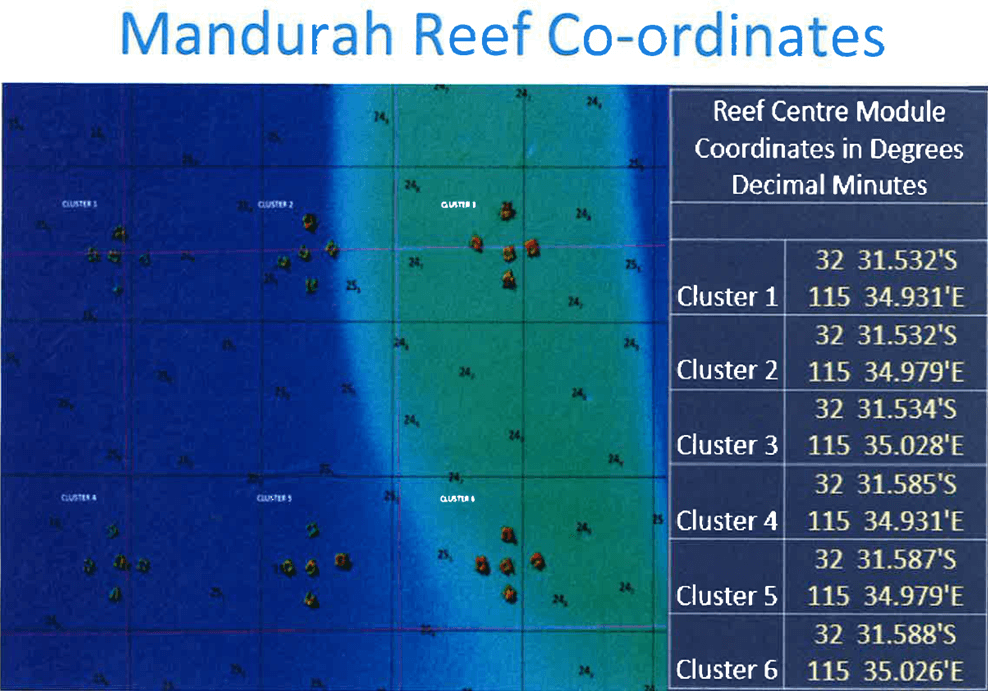 A new tagging project will track the movement of Black Bream in the Swan/Canning estuary and needs the help of recreational fishers. The ‘SwanTrack’ project involves a collaboration between the Department of Parks and Wildlife and Murdoch University (Centre for Fish and Fisheries Research) and involves setting up an acoustic receiver arrays (or ‘listening stations’) that are attached to yellow buoys (with DPaW written on them) right throughout the Swan and Canning estuary.
A new tagging project will track the movement of Black Bream in the Swan/Canning estuary and needs the help of recreational fishers. The ‘SwanTrack’ project involves a collaboration between the Department of Parks and Wildlife and Murdoch University (Centre for Fish and Fisheries Research) and involves setting up an acoustic receiver arrays (or ‘listening stations’) that are attached to yellow buoys (with DPaW written on them) right throughout the Swan and Canning estuary.
The array will allow the tracking of any of the larger species of fish to answer questions about how they use the estuary (e.g. where do they breed? which habitats do they use and when?). The fish are tracked by placing acoustic transmitters inside each fish that are then detected by the receivers when they pass within a couple of hundred metres.
The tags provide useful information on movement patterns and it have the potential to be used for several species. The first project will focus on Black Bream and financial support for honours students has been provided by Revfishwest. The project will acoustically track Black Bream (Acanthopagrus butcheri) using the SwanTrack array to determine how their movements and habitat use relate to the water quality conditions in the Swan River, including how those movements specifically respond to operation of the new oxygenation plants.
Information gathered will be of direct use by managers in understanding fish response to the plants and possibly enable refinement of their operation to maximise their efficiency.
The tagged bream will have a yellow spaghetti tag (they may foul up a bit and turn black) with Murdoch Uni, a tag number and a phone number. Researchers would appreciate anyone who catches a tagged fish contact them with where they caught it, when, and its total length. Contact Stephen Beatty, 9360 2813 or www.freshwaterfishgroup.com if you catch a fish. Make sure you take a photo and let us know.
With the cost involved with the project, they would also like people to release those tagged fish, of which there are 55 in the system. Stay tuned for photos, video’s and results of the study.
We’ll keep you updated on the results of the project.
 The module design is the same as those used in the south west artificial reefs, being a hollow cube with curved cross braces. The design is aimed to promote upwelling (bringing nutrient rich water from the sea floor to the surface creating phytoplankton and zooplankton blooms, providing the basis for productive food chains) as well as create varied complex spaces and habitats which act as shelter for fish.
The module design is the same as those used in the south west artificial reefs, being a hollow cube with curved cross braces. The design is aimed to promote upwelling (bringing nutrient rich water from the sea floor to the surface creating phytoplankton and zooplankton blooms, providing the basis for productive food chains) as well as create varied complex spaces and habitats which act as shelter for fish.


 A project which will help shape future management of the Marron fishery has revealed some fascinating insights into the drivers and aspirations of participants in this fishery. The project entitled ‘Future Proofing WA’s Iconic Marron Fishery’ was funded by the Federal Government through the FRDC and is a partnership between Ecotone Consulting, Department of Fisheries, Murdoch University and Recfishwest.
A project which will help shape future management of the Marron fishery has revealed some fascinating insights into the drivers and aspirations of participants in this fishery. The project entitled ‘Future Proofing WA’s Iconic Marron Fishery’ was funded by the Federal Government through the FRDC and is a partnership between Ecotone Consulting, Department of Fisheries, Murdoch University and Recfishwest.